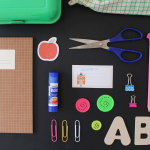
08 Jun More sleep, less traffic: Why we should consider changing school hours
During his maiden speech to NSW Parliament (June 2023), Member for Ryde Jordan Lane said that “local schools should become hubs for after-school activity”, where the government guarantees that a child can remain on school campuses well after 3 pm.
“Greater flexibility for parents, a productivity and employment boost to the state, financial relief from the high cost of child care and an injection of hope for potential but reluctant parents who, like me, struggle to rationalise how to afford, in terms of both time and money, children, a home and equal employability between partners,” he said.
Lane isn’t the first to flag the idea, with former NSW premier Dominic Perrottet also conceding the “9 to 3” schedule “doesn’t work” last year.
Ken Purnell looked at what we know about the benefits of staggered school start (and finish) times.
New South Wales first trialled different start and finish times for various year levels in primary schools.
They reported their aims included reducing traffic congestion and providing more flexibility to certain families, including shift workers.
In Queensland, principals have the option to stagger the start of their school days. It could be as simple as starting some classes at 9:30 am and finishing at 3:30 pm.
But how would it all work? And do we have evidence it will make a positive difference?
Teenagers need more sleep
Let’s first talk about sleep, which young people don’t get enough of.
Australia’s sleep guidelines recommend children aged five to 13 get nine to 11 hours of uninterrupted sleep each night. 14 to 17 year olds should aim for eight to ten hours, but are only getting an average 6.5 to seven hours on a school night.
The average teenager likes to stay up later and wake later, so the sleepiness hormone, melatonin, is released at a later time and delays the body clock. This then means young people feel sleepier later on in the day and sleep in later in the mornings.
This is one important reason school start times, particularly for older students, should be delayed.
A 2016 study found not getting enough sleep contributed to several cognitive and behavioural problems in students that had a negative impact on their academic performance and functioning. The study supported delayed school start times to improve sleep.
What do we know about staggered school times?
I taught in a school that used a split shift timetable. Year 10–12 students started at 7:30 am and finished at 2:15 pm. Years 7–9 students started at 9 am and finished at 3:30 pm.
There isn’t much research in this area. But in 2007, I supervised a doctoral study investigating timetable reform with split shifts in Queensland schools.
The research examined existing practices in schools that had various nontraditional school hours. It focused on one of the state’s largest secondary schools near Brisbane.
Here, year 10-12 students started at 7:30 am and finished at 1 pm, while students in years 7-9 started at 10:30 am and finished at 4 pm. This split the school day into two distinct shifts. A primary aim was to maximise students’ use of school facilities and staff expertise.
The researcher interviewed and ran focus groups with a range of stakeholders, including teachers, parents and students. The main question was about how effective and efficient staff, students and parents found the reform structure of a split-shift timetable.
These were the benefits
Ultimately, the community perceived schools with staggered hours were working well to meet local needs.
The study identified a number of other benefits for students, parents, teachers, schools and communities.
For students, there was
- less overcrowding and congestion in and near the school, and on public transport
- increased access to staff assistance, resources and specialist facilities
- better access for junior high school students to resources and facilities usually prioritised for senior high school students.
And in some cases, students found it easier to get part-time jobs and access work sites for vocational education and training.

Shutterstock
For staff, the split shifts created better blocks of teaching time. However, it’s important staff be allocated to one shift on a teaching day — not, say, starting with year 12 at 7:30 am and finishing with year 7 at 4 pm (unless by mutual agreement in specific cases).
For parents and the community, benefits included
- better access to school buses and less congestion for school drop off and pick up
- better access to specialist teachers
- increased access to students for appointments (in the community)
- reduced need for new buildings
- less need for specialist school teaching spaces (which are unused for more than two-thirds of the year).
Could all schools do this?
There were, of course, many kinks still to work out if NSW were to do this on a system-wide level.
For instance, parents are worried a change to the school schedule may disrupt their already curated schedules that take in the needs of school, extra-curricular activities, commuting and work. Parents with children at different schools are worried one will change its hours but the other won’t. Or a later finish will make it harder to get kids to swimming lessons and soccer training.

Schools in 46 states in the United States have been running various forms of staggered school start times in ways that seem to work for the community. One school superintendent from Minnesota, Dr Kenneth Dragseth, said: “starting school later was the most significant and beneficial decision I made in all my years as an educator”.
A research base will soon emerge for NSW state schools on what works and doesn’t work with regard to school start and finish times. This may then change over time as the model adapts to emerging needs or identified problems.![]()
Ken Purnell, Professor of Education, CQUniversity Australia
This article is republished from The Conversation under a Creative Commons license. Read the original article.




